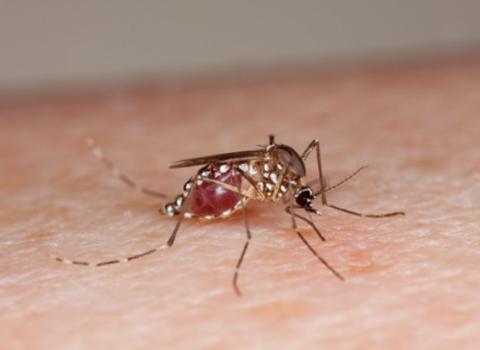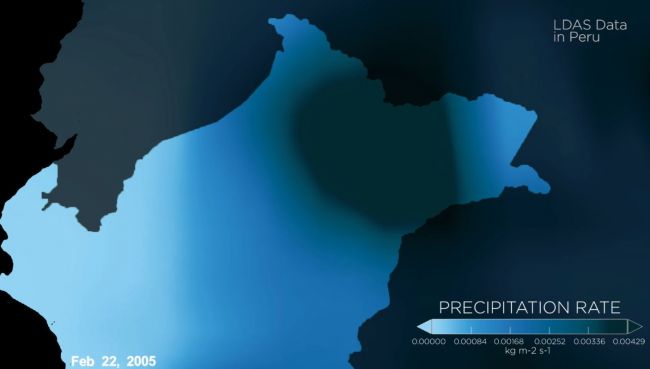How NASA Satellites Are Helping Track Disease Outbreaks

Mosquito-borne diseases are responsible for hundreds of thousands of deaths worldwide every year, according to the World Health Organization (WHO), which is why NASA has been working to help track outbreaks.
Now, the space agency is expanding such efforts by collaborating with foreign governments and the WHO, officials with NASA's Earth Sciences Division wrote in a June 27 blog post detailing the role NASA plays in helping to combat the spread of mosquito-borne diseases.
NASA is supporting the development of an early warning system in Myanmar that uses satellite data, for instance. Agency satellite observations are also being integrated into a regional-based statistical model to combat mosquito-borne disease in Peru.
The post outlines initiatives in several parts of the world funded by the Health and Air Quality Applications area of NASA Earth's Applied Science Program.
Related: Photos: Earth Day 2019: These Amazing NASA Images Show Earth from Above
The satellte data reveal environmental changes, but that information isn't enough. For scientists to fully understand the spread of these diseases, researchers need population data, NASA officials wrote in the blog post. For instance, malaria symptoms may not appear until several weeks after a person is bitten by an infected mosquito. As such, if someone shows signs of malaria in one location, it doesn't mean that person became sick there.
Warm, wet regions make for ideal mosquito breeding grounds. Satellites can monitor changes in temperature, soil moisture and precipitation in such regions across the globe.
Get the Space.com Newsletter
Breaking space news, the latest updates on rocket launches, skywatching events and more!

To make sure that preventive measures, like bed nets and indoor sprays, are used where the disease is actually contracted, Peruvian officials and NASA researchers draw on observations of the movement of people and precipitation gathered before an outbreak. That information feeds detailed statistical models such as one developed by researchers William Pan, of the Duke University Global Health Institute, and Ben Zaitchik, of the Johns Hopkins University Department of Earth and Planetary Sciences..
In Myanmar, a satellite-based malaria-forecasting program makes use of Landsat satellites that can identify various bodies of water, which may indicate mosquito breeding grounds. These data and other observations support the Myanmar Malaria Early Warning System, developed by Tatiana Loboda, an assistant professor in the University of Maryland Department of Geography. This system doesn't observe whole regions but instead focuses on changes to particular areas, considering population density, socioeconomic status and military conflict along with geographical changes.
Loboda's project incorporates satellite remote sensing with medical surveys and mosquito observations ''to explore the role of land cover and land use as indicators of both human presence and activity and mosquito habitat suitability'' that would allow for a ''dynamic monitoring'' of a region's risk potential to malaria, according to a project description published by the university's National Socio-Environmental Synthesis Center in Oct. 2018.
NASA's Health and Air Quality Applications programs also use satellite data to look at the effects of climate change on air quality and public health.
- Data from Weather-Tracking Satellite Helps Scientists Predict Cholera Outbreak
- There Are Bacteria and Fungi All Over the Space Station, and Now We Know What They Are
- NASA's Rain-Tracking GPM Satellite Mission in Pictures
Follow Doris Elin Salazar on Twitter @salazar_elin. Follow us on Twitter @Spacedotcom and on Facebook.
Join our Space Forums to keep talking space on the latest missions, night sky and more! And if you have a news tip, correction or comment, let us know at: community@space.com.

Doris is a science journalist and Space.com contributor. She received a B.A. in Sociology and Communications at Fordham University in New York City. Her first work was published in collaboration with London Mining Network, where her love of science writing was born. Her passion for astronomy started as a kid when she helped her sister build a model solar system in the Bronx. She got her first shot at astronomy writing as a Space.com editorial intern and continues to write about all things cosmic for the website. Doris has also written about microscopic plant life for Scientific American’s website and about whale calls for their print magazine. She has also written about ancient humans for Inverse, with stories ranging from how to recreate Pompeii’s cuisine to how to map the Polynesian expansion through genomics. She currently shares her home with two rabbits. Follow her on twitter at @salazar_elin.









